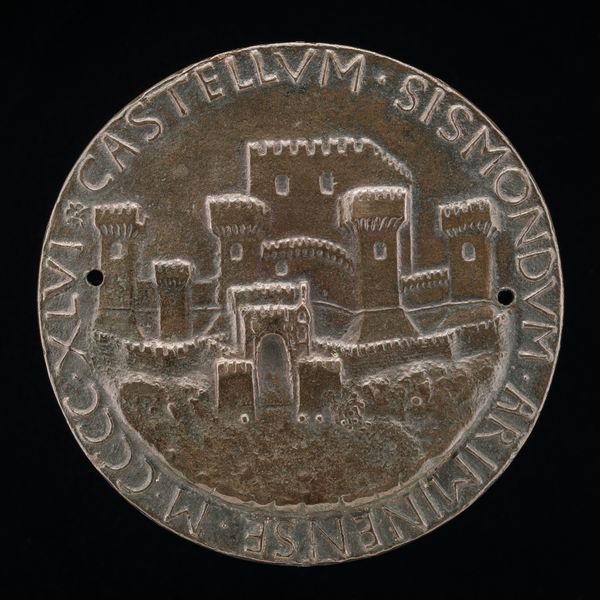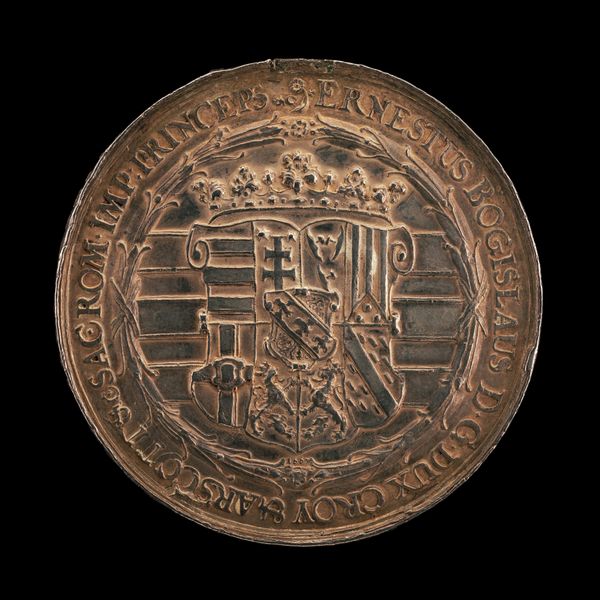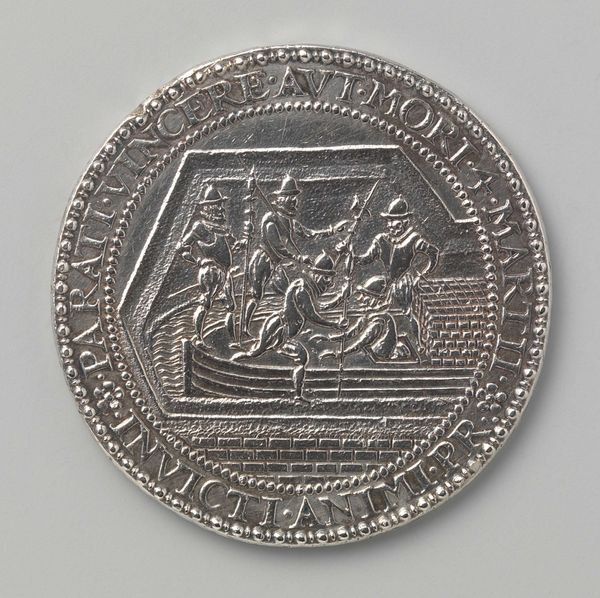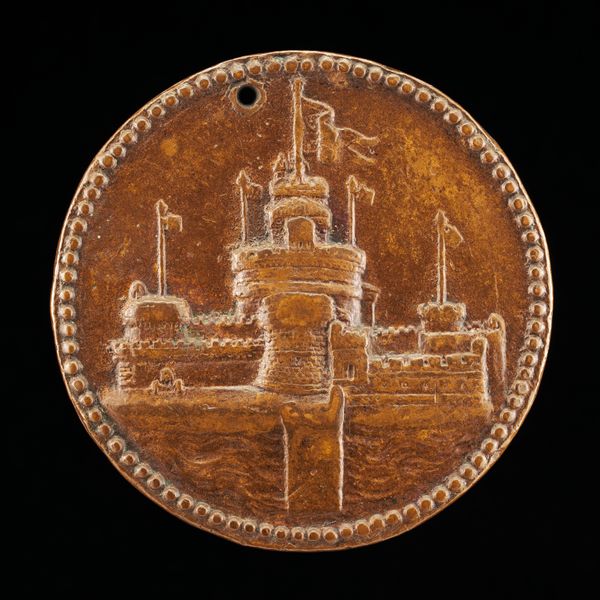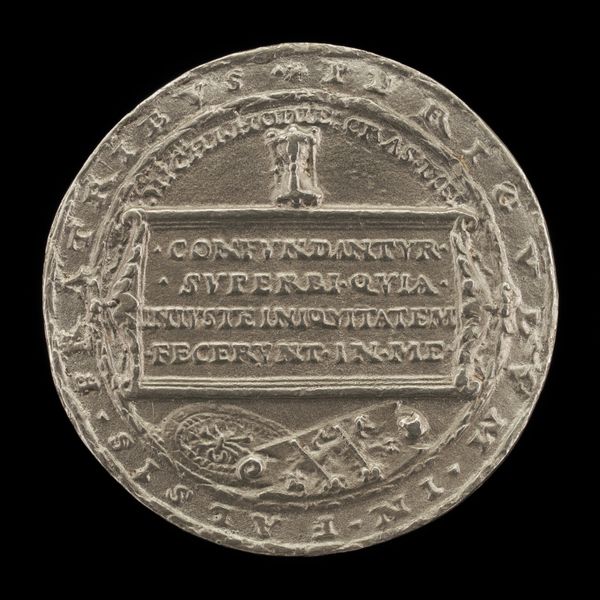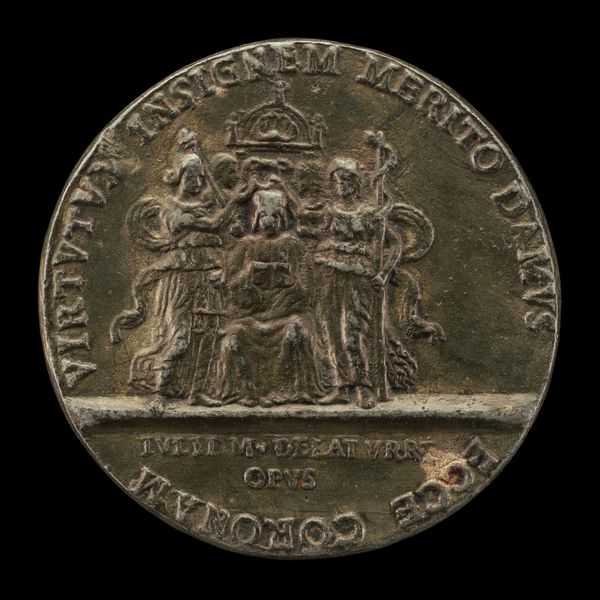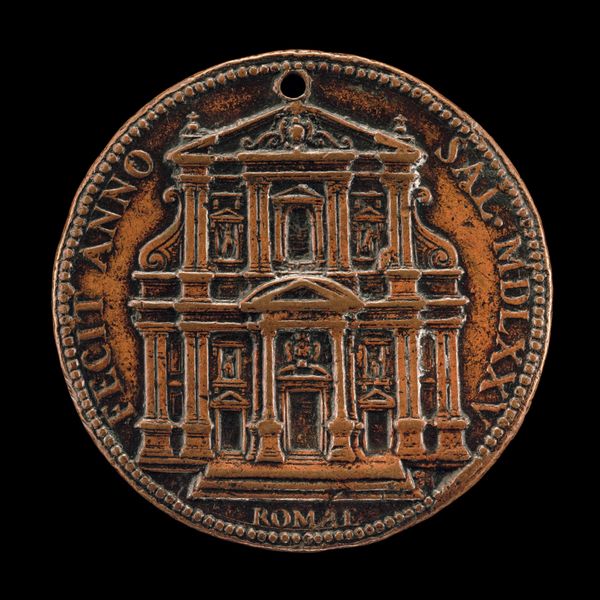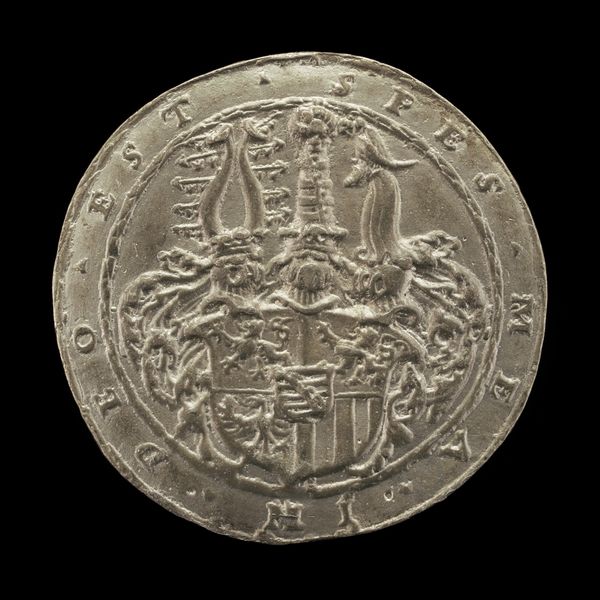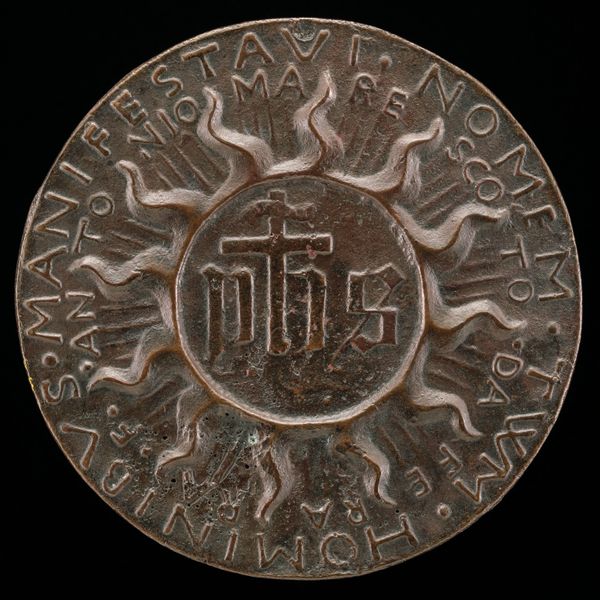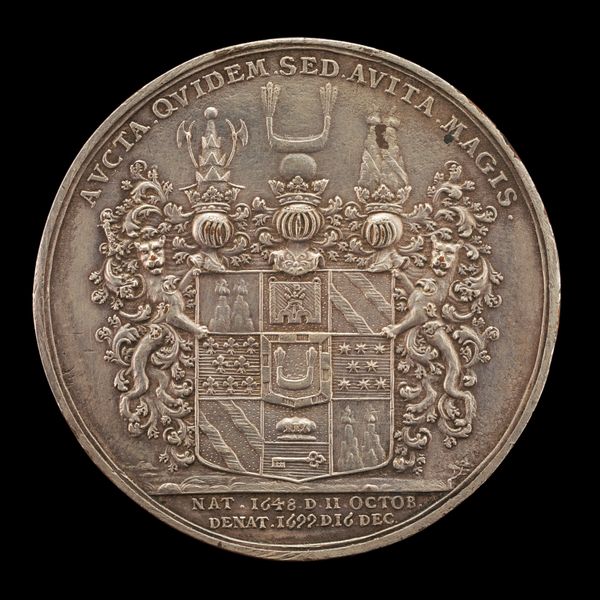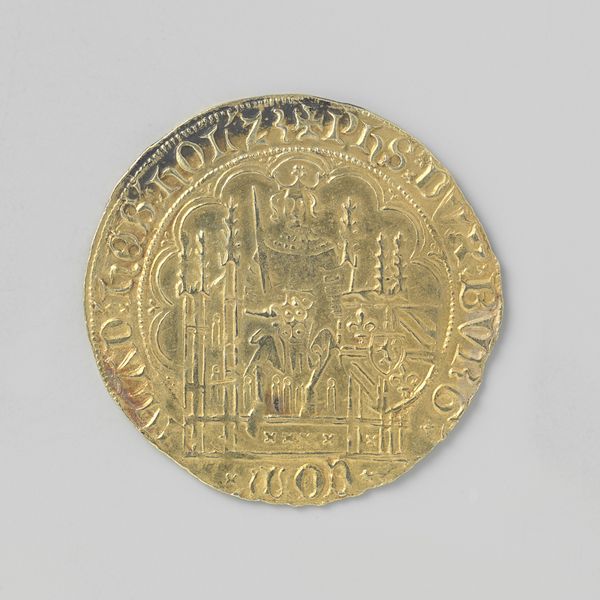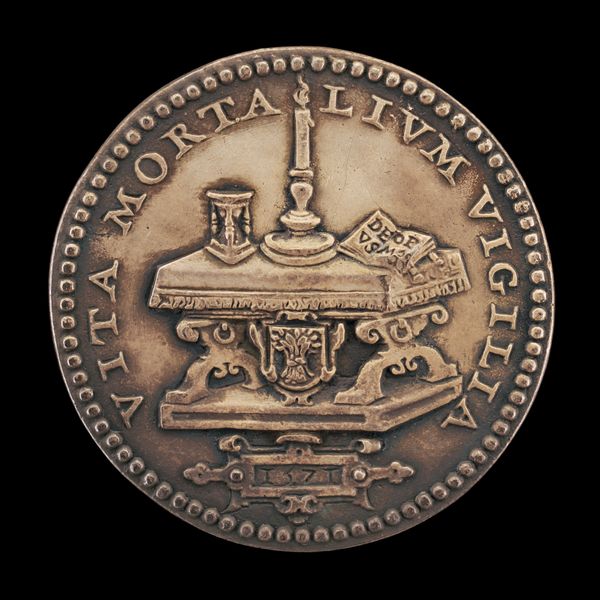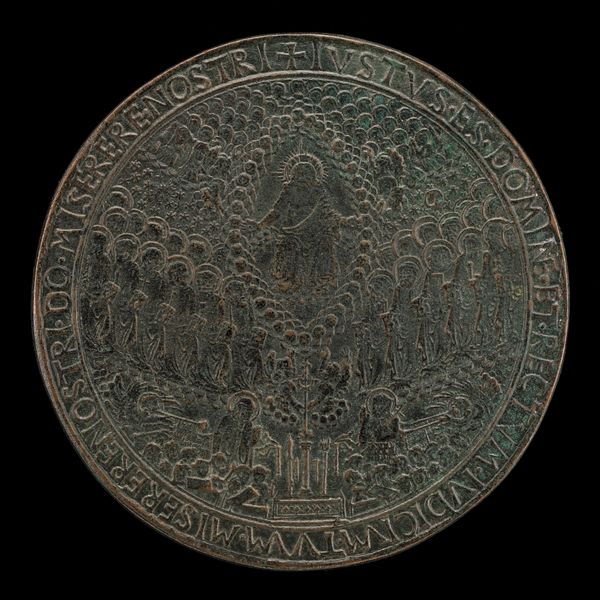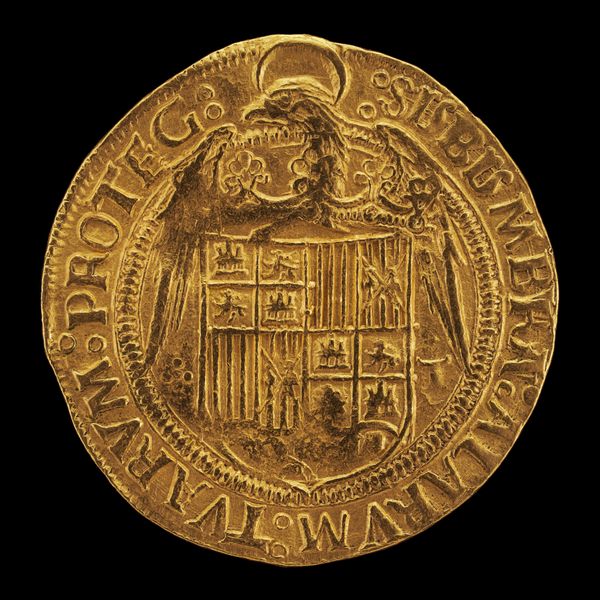![The Castle of Rimini [reverse] by Matteo de' Pasti](/_next/image?url=https%3A%2F%2Fd2w8kbdekdi1gv.cloudfront.net%2FeyJidWNrZXQiOiAiYXJ0ZXJhLWltYWdlcy1idWNrZXQiLCAia2V5IjogImFydHdvcmtzL2FjMjgwYjljLTUxNzYtNGVlMy1hNWFlLThkNWVmZmNiYTI1Yy9hYzI4MGI5Yy01MTc2LTRlZTMtYTVhZS04ZDVlZmZjYmEyNWNfZnVsbC5qcGciLCAiZWRpdHMiOiB7InJlc2l6ZSI6IHsid2lkdGgiOiAxOTIwLCAiaGVpZ2h0IjogMTkyMCwgImZpdCI6ICJpbnNpZGUifX19&w=3840&q=75)
metal, relief, bronze, sculpture
#
portrait
#
medal
#
medieval
#
metal
#
stone
#
sculpture
#
detailed texture
#
relief
#
bronze
#
sculptural image
#
geometric
#
sculpture
Dimensions: overall (diameter): 8.04 cm (3 3/16 in.) gross weight: 196.95 gr (0.434 lb.) axis: 1:00
Copyright: National Gallery of Art: CC0 1.0
Curator: What a formidable-looking fortress! Is this one of those medieval castles? Editor: Indeed. What we're observing here is a bronze reverse of a medal made by Matteo de' Pasti, titled "The Castle of Rimini," dating back to somewhere between 1454 and 1460. It offers us an intricate glimpse into fifteenth-century Italian fortifications. Curator: The meticulousness of the lines forming the battlement and walls certainly demands attention. There’s a geometric harmony that structures the entire composition; almost as if the fortification itself follows a mathematical principle of design. Editor: Absolutely. These medals were not mere decorations; they were potent symbols of power, identity, and allegiance. Sigismundo Pandolfo Malatesta, for whom this medal was made, used these images to project an image of strength, refinement, and legitimacy, particularly important amidst the complex politics of Renaissance Italy. This depiction isn't just architectural—it's fundamentally political. The castle represented not only Rimini, but also Sigismundo’s ambition to rule. Curator: You can almost trace the light catching on the relief of the bronze; how the detailed texture renders the impression of age and solid weight. It creates a real sense of depth, drawing the eye into the various segments of the castle itself. Editor: Note too the text inscribed along the edge, reinforcing Sigismundo's dominion, visually cementing his place and claim to the city. When considering medals like these, it's crucial to also acknowledge their distribution and function within gift-giving economies, especially to create social and political alliances. Curator: It really strikes me, the way the medium and the motif converge to exude an aura of enduring power and impregnability. The relief work captures how solid this fortification looks! Editor: I agree. The success of this medal resides in Pasti’s fusion of artistic skill with the cultural and political imperatives of his patron. The ‘Castle of Rimini’ transcends being simply a piece of art, or a portrait, transforming into a potent historical and cultural artifact. Curator: Analyzing the artistic decisions involved reveals so much more than meets the eye initially. Editor: Precisely; deconstructing these details highlights just how much intentionality goes into such objects and hopefully encourages viewers to ask further questions.
Comments
No comments
Be the first to comment and join the conversation on the ultimate creative platform.
